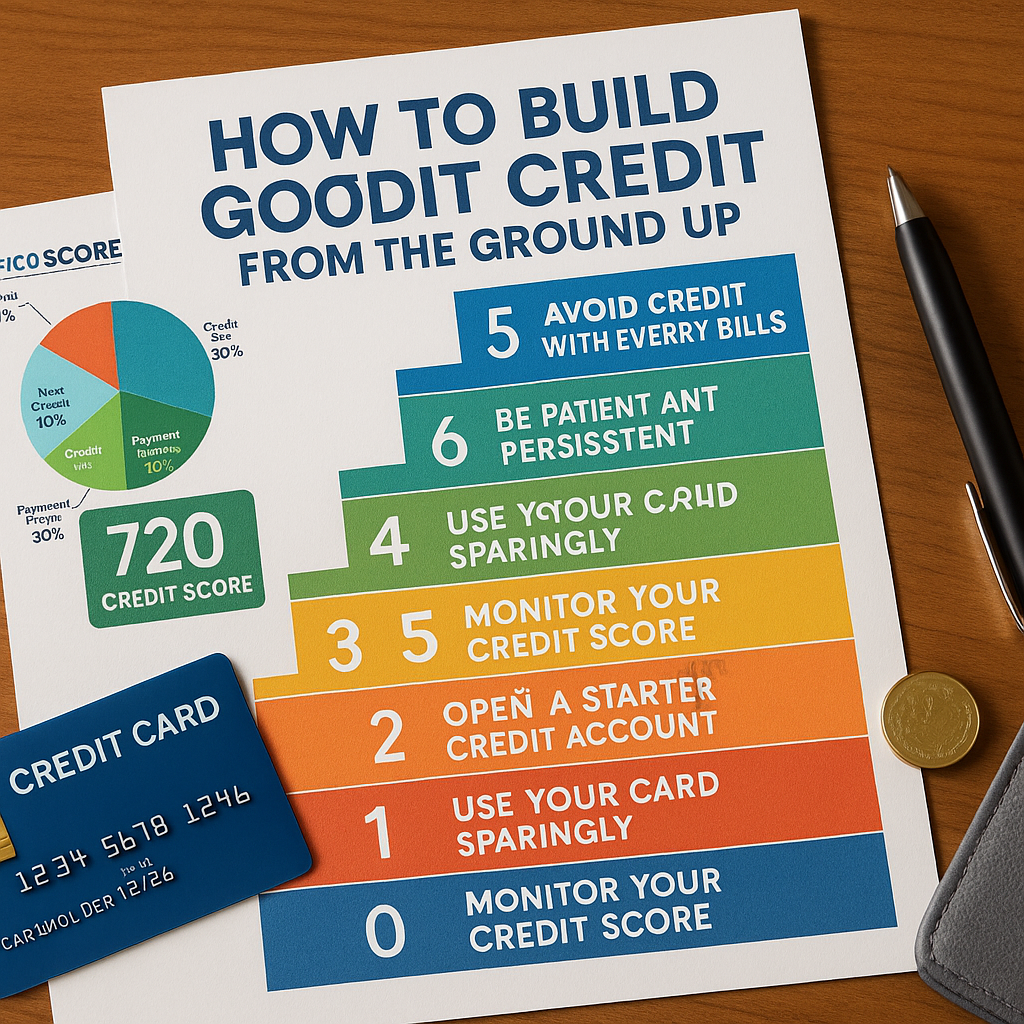Whether you’re just starting out or recovering from past financial mistakes, building good credit is one of the most important steps toward long-term financial health. A strong credit score opens the door to better loan rates, housing options, and even job opportunities.
In this article, you’ll learn step-by-step how to build (or rebuild) your credit from scratch—without falling into debt traps.
Why Good Credit Matters
Your credit score impacts:
- Loan approvals and interest rates
- Credit card eligibility
- Apartment and rental applications
- Utility deposits
- Car and home insurance premiums
- Some job background checks
With strong credit, you’ll pay less, access more, and stress less.
Step 1: Understand How Credit Scores Work
The most common score is the FICO Score, ranging from 300 to 850.
Key Factors:
- 35% Payment history – Pay on time, every time
- 30% Amounts owed (credit utilization) – Keep balances low
- 15% Length of credit history – Older is better
- 10% Credit mix – A mix of credit cards, loans, etc.
- 10% New credit – Too many applications can hurt
Step 2: Open a Starter Credit Account
If you have no credit, start small and safe.
Best options:
- Secured credit card – Requires a refundable deposit (often $200–$500)
- Credit-builder loan – You pay monthly into a locked account, and get the money later
- Become an authorized user – Ask a trusted person to add you to their credit card
- Student credit cards – If you’re in college, these can be more accessible
Choose just one to start. Use it responsibly.
Step 3: Use Your Card—but Sparingly
Credit is about activity and responsibility—not just having a card.
Guidelines:
- Use your card regularly (e.g., for gas or groceries)
- Keep your credit utilization below 30%
(i.e., spend no more than $30 if your limit is $100) - Pay your full balance every month
- Never miss a due date (set up auto-pay!)
Consistency builds trust with lenders.
Step 4: Monitor Your Credit Score
Knowing your score helps you track progress and spot issues.
Free options:
- Credit Karma
- Experian
- Your bank or credit card issuer
- AnnualCreditReport.com (free reports from all bureaus)
Check monthly for accuracy and fraud.
Step 5: Avoid Common Credit Pitfalls
Stay clear of mistakes that can damage your score:
- Missing payments – even one can hurt
- Maxing out cards – hurts utilization and creates stress
- Applying for too many cards – too many inquiries
- Closing old accounts – reduces credit history length
- Carrying balances – pay in full if possible
Remember: responsible credit use is a long game.
Step 6: Build Credit With Everyday Bills (Optional)
Some services now report regular bills to credit agencies.
Examples:
- Experian Boost – Adds payments for utilities, Netflix, phone
- Rental reporting services – Adds your rent history to your credit file
It’s a good way to improve your score with bills you already pay.
Step 7: Be Patient and Persistent
Credit takes time to build—but it’s worth it.
- Your first score may take 3–6 months to appear
- Scores improve with steady use and on-time payments
- The longer your accounts stay open, the stronger your history
Track your progress every few months and celebrate improvements.
Final Thoughts: Credit Is a Tool, Not a Trap
Used wisely, credit can help you unlock major life goals—like buying a home, starting a business, or traveling more affordably.
Start small, stay consistent, and remember: building good credit is not about perfection—it’s about progress.


Sem comentários